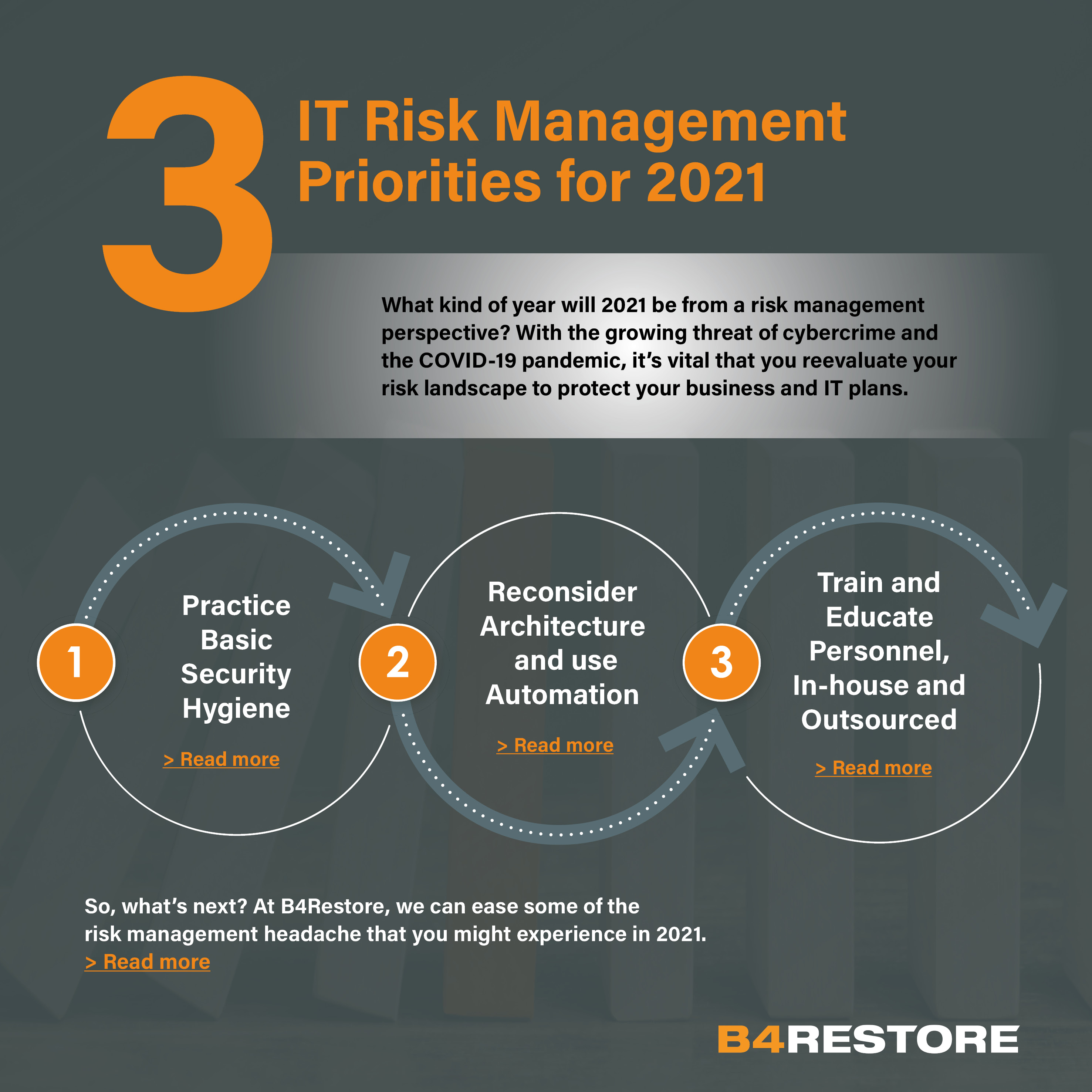What kind of year will 2021 be from a risk management perspective? With the growing threat of cybercrime and the COVID-19 pandemic, it’s vital that you reevaluate your risk landscape to protect your business and IT plans.
A recent Gartner publication* presents the major trends in security and risk management in 2021 based on surveys and feedback from business and IT leaders. Check out the key findings here for inspiration on planning and executing strong security initiatives in 2021.
 Let's talk
Let's talk
Contact our COO Jørgen Pedersen for a talk about your current IT security and compliance.
-
Practice basic security hygiene
Be aware of the latest high-exposure risks caused by changes in compliance, business and the COVID-19-related disruption. Your IT landscape has definitely changed. For example, the heavily accelerated work-from-home scenario requires urgent action regarding security. The key here is to practice basic security hygiene at user endpoints, home networks and cloud collaboration applications.
Also consider whether there are security or compliance regulations or digital business initiatives that need IT security revision. Usually, any new digital initiative will require extra attention to ensure it can be accelerated without sacrificing security.
As part of basic security hygiene, you need to identify assets that are highly exposed, such as email, client endpoints and privileged user accounts for cloud, as well as internet-exposed datastores, file shares and applications. -
Reconsider architecture and use automation
IT security solutions are becoming increasingly complex and specialized, and it can be difficult to clearly understand a product’s security features and applicability. You may therefore need to reconsider your data protection technology suite and organization to ensure you have the most optimal and cost-efficient mix.
Also, consider possibilities for outsourcing, simplifying and automating tasks. Security operations draw heavily on your resources – a big challenge in every industry and company, regardless of size. Determine the right mix of in-house and outsourced security operations solutions and utilize automation and orchestration to increase accuracy and efficiency.
> See also "5 Questions a CFO Needs to Ask IT Security -
Train and educate personnel, in-house and outsourced
Risk mitigation is not just a technology arms race, aiming just for quicker detection or more advanced systems. In fact, it often comes down to the human factor, which is a double-edged sword; your employees present a potential risk, but they’re also part of the solution.
With lack of procedures or with gaps in knowledge and skills, the IT security risk is higher. On the other hand, to design and operate advanced technology, you need highly qualified and trained specialists, either in-house or outsourced.
How can we help?
So, what’s next? At B4Restore, we can ease some of the risk management headache that you might experience in 2021. We can’t make the cyber-threats go away, but we can make sure your data is safe, even if your systems should become locked down by ransomware.
Our Backup-as-a-Service solutions seamlessly adapt to your ever-changing IT infrastructure, regardless of which technology or applications you use.
Moreover, we’ve been doing this since 2003, and our team of backup specialists is always up to date on the latest trends in our field.
Lets Talk

Contact our COO Jørgen Pedersen for a talk about your current IT security and compliance.
* Gartner, 2021, Planning Guide for Security and Risk Management



